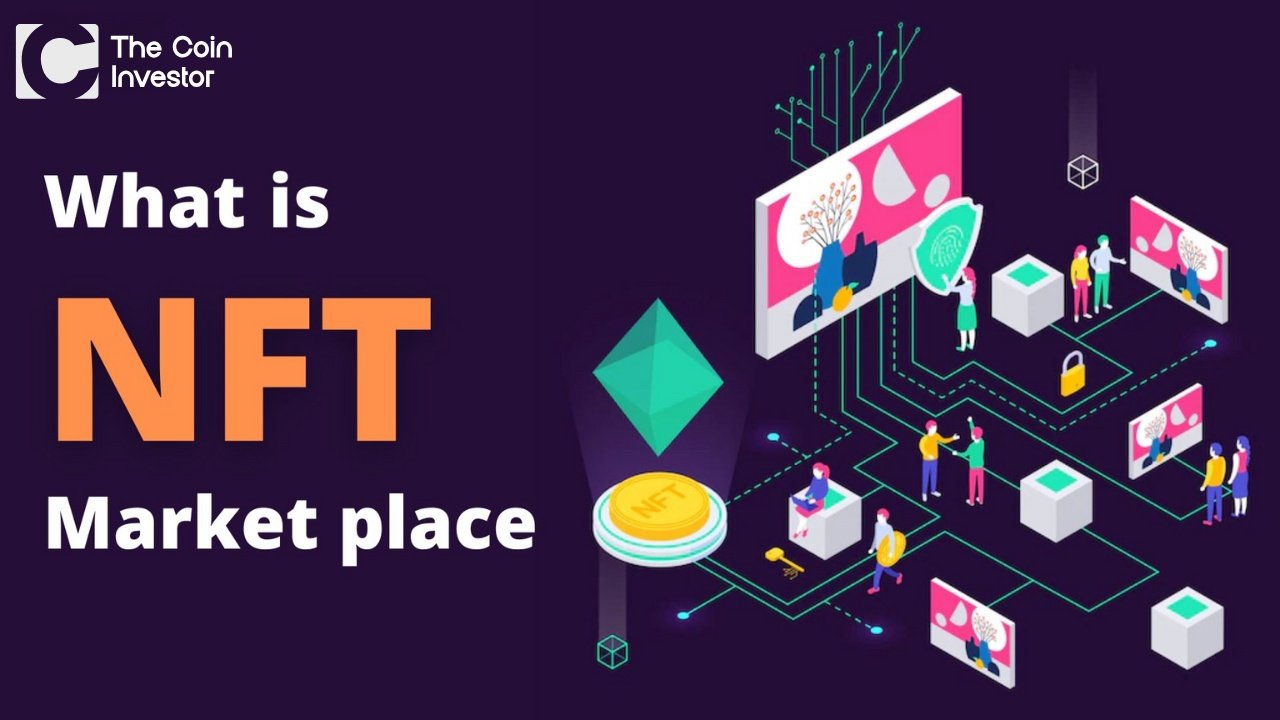The emergence of NFT marketplaces has revolutionized the concept of digital ownership, creating unprecedented opportunities for both creators and investors to participate in the digital economy. These platforms serve as the primary infrastructure for trading non-fungible tokens, which represent ownership of unique digital assets ranging from digital art to virtual real estate. As the NFT space continues to evolve, the right marketplace can make the difference between successful investment outcomes and missed opportunities.
For investors seeking to capitalize on this digital transformation, the choice of nft marketplace platforms becomes critical. Different types of nft marketplaces offer varying features, security measures, and user experiences that directly impact trading success.
The market trends indicate sustained growth, with the digital collectible market expanding from an estimated $10,954 million in 2025 to a projected $54,019 million by 2035.
What is NFT Marketplace?

An NFT marketplace is a site for making, buying, selling, and trading non-fungible tokens. These tokens stand for unique digital items.
Unlike regular exchanges for fungible tokens, these sites focus on rare items that cannot be copied.
Blockchain tech makes sure that the items are real and helps in safe ownership transfer of digital collectibles. NFT marketplaces work like online stores but use different technologies and types of assets. Users link their crypto wallets to deal with smart contracts for trades.
Ethereum is the main blockchain used by most popular NFT marketplaces. Other blockchains like Solana and Polygon are also becoming well-known.
Top NFT marketplaces offer more than just simple trades. They provide spaces where creators can make art, collectors can build collections, and investors can watch trends.
Platform fees usually go from 2.5% to 10%. This depends on the marketplace and the type of trade made.
How NFT Marketplaces Differ From Traditional Marketplaces?
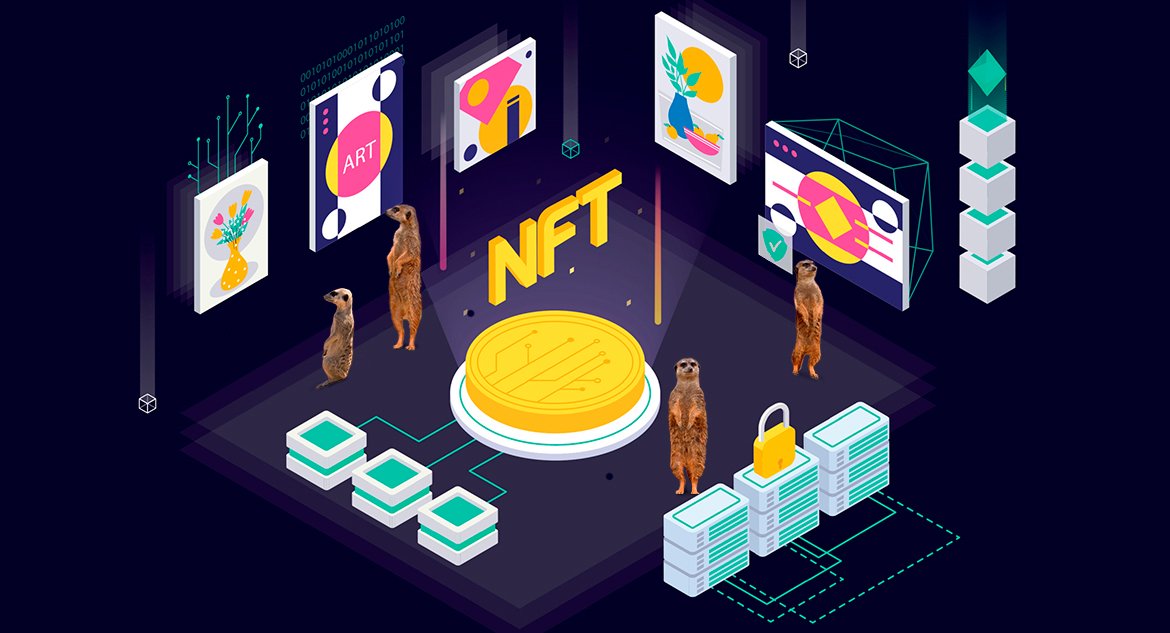
The fundamental distinction between NFT marketplaces and traditional marketplaces lies in the uniqueness of traded items. While conventional e-commerce platforms deal with mass-produced goods, nft art and digital items on these platforms are typically one-of-a-kind or part of highly limited collections. This scarcity model creates entirely different market dynamics and value propositions.
Transaction mechanisms also differ significantly. Traditional marketplaces typically accept conventional payment methods like debit cards and bank transfers, while nft trading requires cryptocurrency transactions through connected wallets. The integration of smart contracts automates many aspects of the transaction process, including royalty payments to original creators on secondary sales.
The ownership verification process represents another key difference. Traditional marketplaces rely on shipping and delivery confirmation, while blockchain platform verification occurs instantly through cryptographic proof. This eliminates the possibility of counterfeit items and provides immutable ownership records that enhance buyer confidence and investment security.
The Evolution of NFT Marketplaces
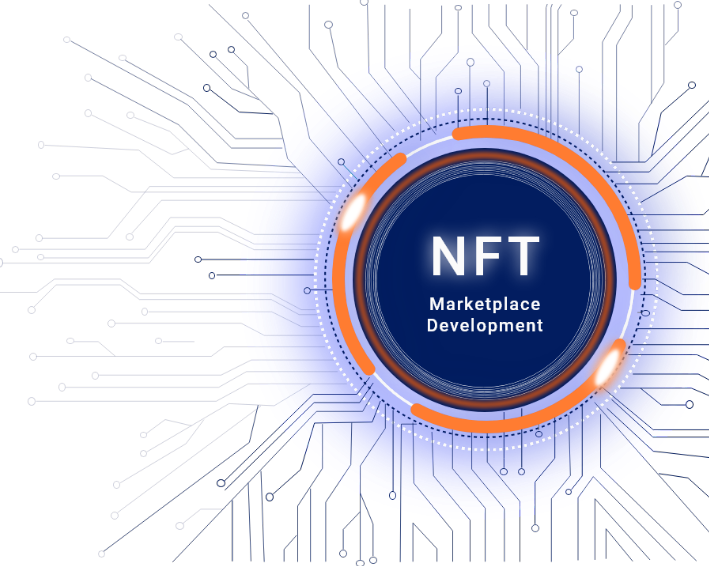
Brief History of NFTs
The idea of non-fungible tokens, or NFTs, began with Bitcoin’s colored coins in 2012-2013. It became well-known in 2017 on the Ethereum blockchain.
The first NFT, called “Quantum,” was made by Kevin McCoy on the Namecoin blockchain in 2014.
However, Ethereum’s platform showed the true power of NFTs.
The CryptoPunks collection launched in 2017 and included 10,000 pixel art avatars. This was one of the first large NFT collections. They were first created as ERC-20 tokens but later needed to change to ERC-721 tokens for trading.
After this, CryptoKitties emerged as a popular game on Ethereum.
In this game, players could buy, collect, breed, and sell virtual cats. This game helped show that NFTs are unique digital items. It also introduced their fun use to more people and highlighted their value in digital ownership.
Rise of Digital Ownership and Collectibles
The rise of NFTs changed how we think about digital ownership. Digital artists started using NFTs to make unique art. They made money from their work and reached fans all over the world. The art world took notice when Beeple sold a digital piece for $69 million in 2021. This sale showed that NFTs are a real market. Well-known collections like Bored Ape Yacht Club built communities around owning digital items and exclusive content. This boom in interest led to “NFT” being named Word of the Year by Collins in 2021.
It helped spread the use of NFTs in many fields. Also, NFTs became part of metaverse projects, which expanded digital ownership into virtual land and gaming items. Platforms like Decentraland and The Sandbox sold virtual land for millions, proving these properties have real value.
Types of NFT Marketplaces
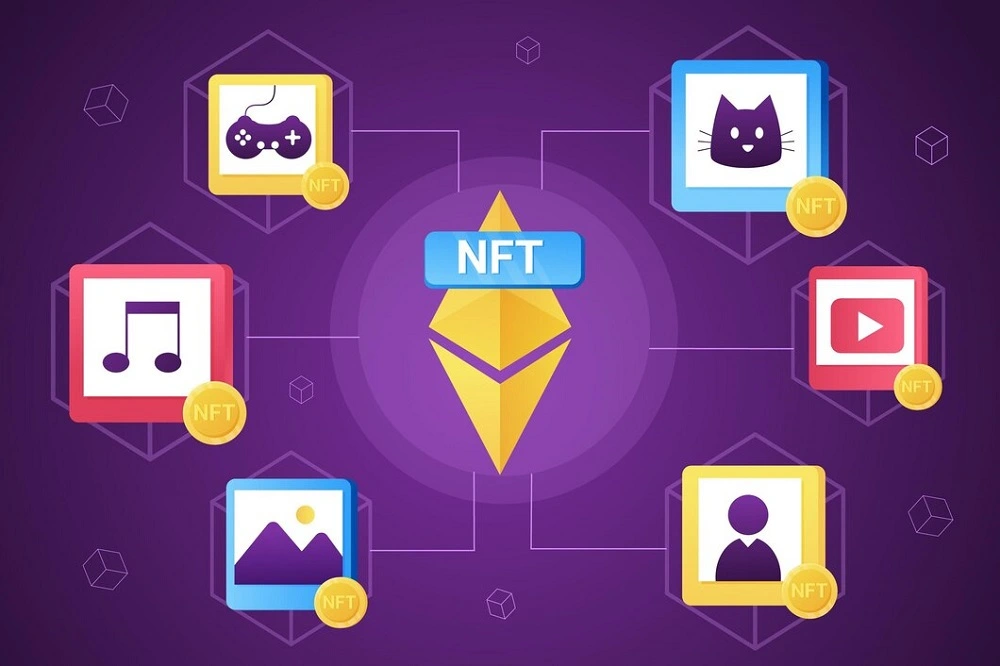
Centralized NFT Marketplaces
Centralized NFT platforms are managed by specific organizations, offering fast transactions and user-friendly interfaces for both newcomers and experienced traders. They provide better customer support, streamlined experiences, and enhanced security compared to decentralized platforms. Popular examples like OpenSea support a wide range of NFTs across multiple blockchains.
Key advantages include simplified onboarding, comprehensive customer service, and often lower transaction fees. These platforms can also offer advanced search functions, recommendation systems, and integrated payment options like debit cards. Their centralized structure allows for quicker dispute resolution and consistent policies.
However, centralized marketplaces have drawbacks, such as single points of failure and greater control over user assets.
Users must trust the platform’s security and integrity since it has significant influence over transaction processes and asset access.
Decentralized NFT Marketplaces
Decentralized NFT marketplace platforms use blockchain technology to minimize control by any single entity and facilitate peer-to-peer transactions, often with lower fees.
They employ smart contracts to automate transactions, removing intermediaries and giving users greater control over their digital assets.
Key benefits include reduced fees, enhanced privacy, and resistance to censorship. Users retain direct control of their crypto assets in personal wallets, lowering counterparty risk.
However, decentralized platforms can pose challenges such as complex user interfaces, limited customer support, and higher technical requirements.
Users need more technical knowledge to navigate these platforms successfully, and gas fee structures can vary based on network congestion.
How NFT Marketplaces Operate?
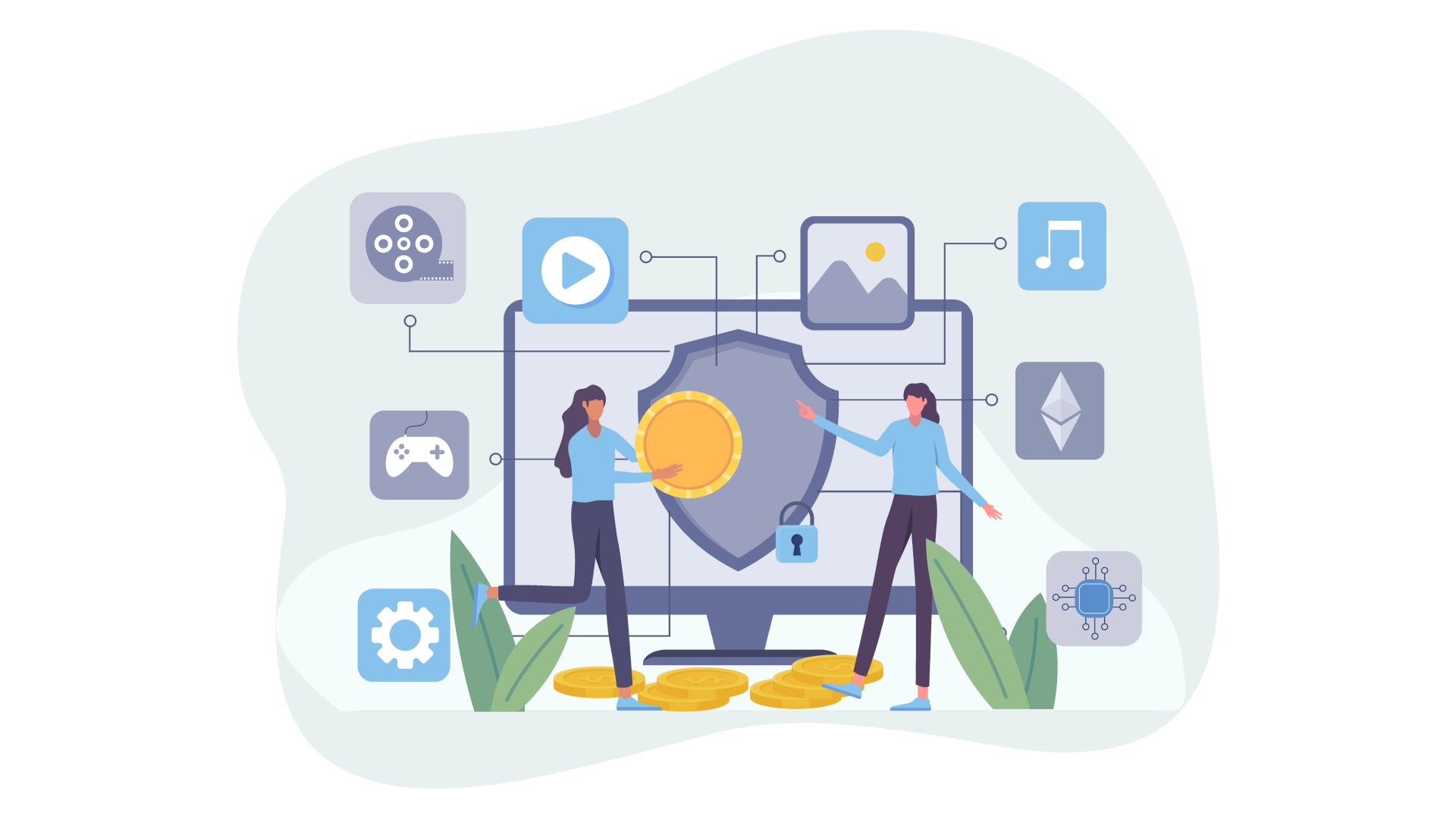
NFT marketplaces use blockchain tech for safe and clear deals of unique digital items. Users link their crypto wallets to browse collections. They can place bids and buy items using cryptocurrency. The blockchain checks these deals and updates ownership records with smart contracts. The process begins by linking wallets like MetaMask to the site. After connecting, users can look at digital items.
They can see NFT details and check who owns them. Buying options include fixed prices and auction bidding, which encourage competition. Verification steps improve trust and stop fraud. Many top marketplaces have systems to confirm creators and collections. An automatic royalty system ensures original creators make money from secondary sales. This gives artists a steady income stream.
Key Components of NFT Marketplaces

Smart Contracts and Blockchain Integration
Smart contracts are very important for NFT trading on marketplace platforms. These contracts run by themselves and follow the rules of transactions. They help manage ownership changes and share payments automatically, without needing people. Usually, they are based on ERC-721 or ERC-1155 rules. This ensures they work well across different platforms and wallets. Blockchain networks keep safe records of transactions that cannot be changed and allow checks from many sources. Ethereum is the main blockchain for NFT marketplaces. However, other options like Binance Smart Chain, Solana, and Polygon have lower fees and work faster.
This way, users can pick what works best for them in terms of cost and speed. Security features in smart contracts include controls for access and checks for ownership. They also have functions to keep payments safe for both buyers and sellers. By combining these security measures with easy-to-use designs, marketplaces stay safe while being simple for all users to use.
User Accounts and Wallet Connections
User interface design is very important for the use of marketplaces. It also affects how users feel when using them. Good platforms mix ease of use with function well. They provide easy ways to navigate for everyone, both tech-savvy and not. To create an account, users often connect their wallets instead of signing up in the usual way. This shows how NFT trading is different and decentralized. Wallet links allow users to handle different types of money easily. Users can manage their NFTs without hassle.
Some popular wallets are MetaMask for Ethereum and Phantom for Solana. There are also mobile wallets that make it easy to reach marketplaces. This wallet link helps with automatic sign-ins and signing deals quickly. Profile features let users show off their NFT collections and track past trades. They can also build their reputation in the community. Many platforms have social tools for following others, commenting on art, and joining discussions that improve the marketplace experience.
Common Categories of NFTs Traded
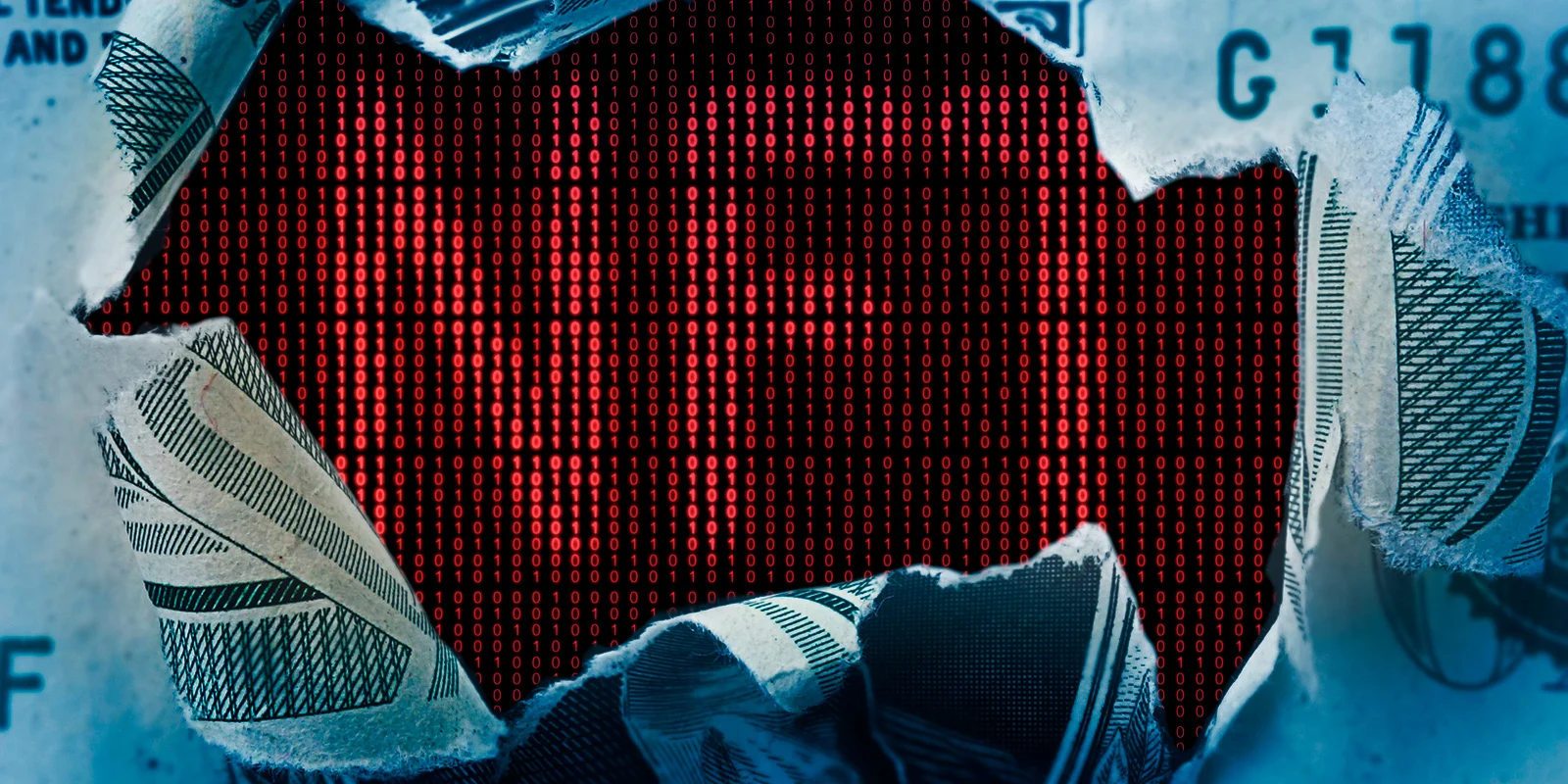
Digital Art and Collectibles
Digital art is the main focus in NFT marketplaces. These places sell everything from single pieces to large collections, like Bored Ape Yacht Club. The collectibles include simple pixel art and detailed multimedia works that change how we see art. The art market has welcomed NFTs for both making new art and investing. Some pieces are sold for millions of dollars. Digital trading cards bring back old ideas but add interactive parts and rarity systems that collectors love. This mix of old and new gives good investment chances for all types of investors.
Projects like CryptoPunks create groups based on digital identity and social rank. They often serve as tokens for special events and networking in the NFT world.
Music and Audio NFTs
Music NFTs are a new type of asset. They help artists earn money directly from their work. Fans also get unique ownership experiences. These digital items can be full albums, single songs, exclusive mixes, or rights to future earnings. The music industry is using NFT platforms as new ways to make money. This helps them avoid old methods of selling music. Audio NFTs are not just for music; they also include podcasts, sound effects, and spoken word pieces.
All of these can earn money using blockchain technology. Music NFTs often come with extra perks like backstage access or special content. This makes them more valuable for collectors and fans. Linking music NFTs with streaming sites and virtual worlds opens up more chances to own audio content. Virtual shows and performances in the metaverse often use NFT tickets or special audio items. This gives fans added value beyond just the event itself.
Gaming Assets and Virtual Items
Gaming is an important area for NFT use. Players trade virtual items, character skins, and weapons as unique digital goods. Games like Axie Infinity show play-to-earn models. These allow players to earn real money through playing and trading assets. The assets are valuable in their own game worlds and as collectibles for trade.
Virtual items also appear on metaverse platforms and social spaces. They can represent clothing for avatars or tools that make user experiences better. The connection of gaming NFTs lets assets keep value across different platforms. This increases their appeal for investment. It also gives developers new ways to earn money and get players involved.
Virtual Real Estate and Metaverse
Virtual real estate is now a big part of NFT marketplaces. Land parcels on sites like Decentraland and The Sandbox sell for high prices. These properties can be built on, used for business, or kept as investments. As more people use metaverse platforms, these investments may grow in value. This potential for growth adds value for both investors and builders.
Virtual properties can host events, work as online stores, or provide spots for socializing. They can create ways to earn money. Most metaverse platforms use a scarcity model. This keeps virtual land rare and valuable. Metaverse integration goes beyond owning land. It includes virtual buildings and whole digital experiences too. This needs investment but offers chances for creativity and building communities.
Event Tickets and Access Passes
NFT event tickets provide better security and less fraud than regular systems. They can have special content, unique features, and resale choices. These benefits help both the organizers and the attendees. Blockchain checks stop fake tickets and create clarity in resale markets. Access passes for special groups and online events show how NFT tech is growing.
They give long-term benefits and steady income for organizers. Using smart contracts with event tickets makes things easier. This includes tasks like refunds, transfer rules, and royalty payments. These changes improve the ticketing experience while reducing work for staff.
Features of Top NFT Marketplaces
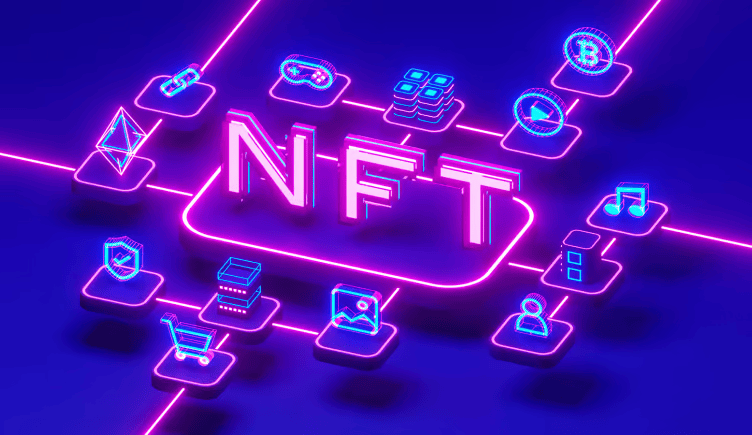
User Interface and Experience
Leading NFT marketplace platforms focus on easy design for all users. The user interface needs to offer both great features and easy use. It should have advanced tools for expert traders while still being simple for beginners. Good platforms have clear navigation and organized categories. They also need a responsive design that works well on different devices.
Search and filter options are key for helping users find specific NFTs quickly in large collections. Advanced functions let users filter by price, blockchain type, creator trust status, and collection fame. Sorting choices help users make smart investment decisions based on their own interests and budgets.
Mobile design is very important as more people use smartphones and tablets to access NFT platforms. The best marketplaces provide full mobile experiences that keep all features working well while adapting to touch screens and smaller displays.
Supported Blockchains and Token Standards
Multi-chain support helps NFT marketplaces use assets from different blockchains. This can reduce gas fees and improve trading chances. The best platforms usually support Ethereum, Polygon, Solana, and other big networks with many NFTs. This way, users can choose networks based on costs, speed, and community needs. Token standard compatibility makes sure NFTs work well across different platforms and wallets. ERC-721 and ERC-1155 are the main standards for Ethereum-based NFTs.
Other networks have their own standards too. Supporting more token standards gives users more options and keeps their assets compatible. Cross-chain bridging allows users to move assets between blockchains easily. This increases liquidity and access to markets for NFT collections. Even though these features need advanced tech skills, they offer great value for users who want to improve their trading plans across various networks.
Security Protocols and Verification
Strong security steps keep users safe from fake listings, bad smart contracts, and weak spots on the platform. Top NFT marketplaces use check systems for creators, collections, and single listings. This helps users find real assets and avoid scams. These checks usually include identity proof, portfolio reviews, and community checks. Smart contract audits make sure that NFT trading tech meets safety rules.
Well-known platforms have regular checks by outside firms to find weak spots and suggest fixes. This boosts user trust in big investments. Two-factor login, safe wallet links, and coded messages protect user accounts and transaction data from bad access. Keeping these steps updated is key to fight new threats and maintain platform safety.
Fees, Royalties, and Transaction Costs
Fee structures affect how much profit users make when trading NFTs. These fees change across different marketplace platforms. Transaction fees can be anywhere from 2% to 10%. Some platforms give lower rates for high-volume traders or premium members. Gas fees for blockchain actions can change based on how busy the network is and how hard the task is. Royalty systems help creators earn money from secondary sales. These royalties usually range from 2.5% to 10%.
This helps creators gain steady income as their work grows in value over time. Some platforms allow different royalty settings, but this can cause debate among creators. Platform fees help with development, security, customer support, and marketing needs for growth. Clear fee structures let users choose wisely about platforms and trading plans to boost profits.
Community and Social Features
Social integration features let users make profiles. They can follow their favorite creators. Users can also join community talks to improve the marketplace experience. These features help build connections and increase platform use. They add value beyond just buying and selling. Community tools include comment systems and creator highlights. There are also curated lists of popular NFT projects.
Creator support tools help artists grow their audiences. They promote their work and connect with collectors too. These tools may have analytics charts, chances for promotion, and ways to talk directly with users. This helps make stronger bonds. Community governance lets users influence how the platform grows and changes rules. Some marketplaces use voting systems with tokens. This way, users can share thoughts on fees, feature choices, and rules that guide the platform’s growth.
Leading NFT Marketplaces in the United States
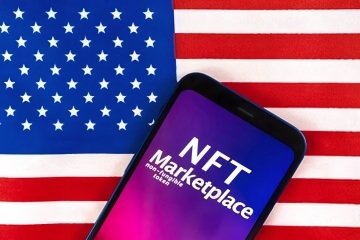
OpenSea: The largest NFT marketplace supporting Ethereum, Solana, and Polygon blockchains. Offers digital art, virtual real estate, and gaming assets with a 2.5% transaction fee. Known for its user-friendly interface and high liquidity.
Rarible: A decentralized marketplace using the RARI token for community governance. Allows creators to mint NFTs on Ethereum, Solana, and Polygon. Features a 2% fee split between buyers/sellers and partnerships with brands like Twitter.
Magic Eden: Dominates Solana-based NFTs but supports Ethereum and Bitcoin Ordinals. Popular for gaming assets and low transaction fees (2%). Includes tools like Launchpad for new projects and focuses on niche marketplaces.
NBA Top Shot: Specializes in NBA-licensed video highlights as tradable digital collectibles. Built on the eco-friendly Flow blockchain, it appeals to sports fans with pack-opening mechanics and exclusive content.
Foundation: A curated platform for high-end NFT art using Ethereum’s ERC-721 standard. Requires artist approval, hosts auctions, and emphasizes community-building for serious collectors.
These platforms highlight diverse use cases, from virtual properties to music NFTs, while balancing security measures and market trends.
How to Use an NFT Marketplace?
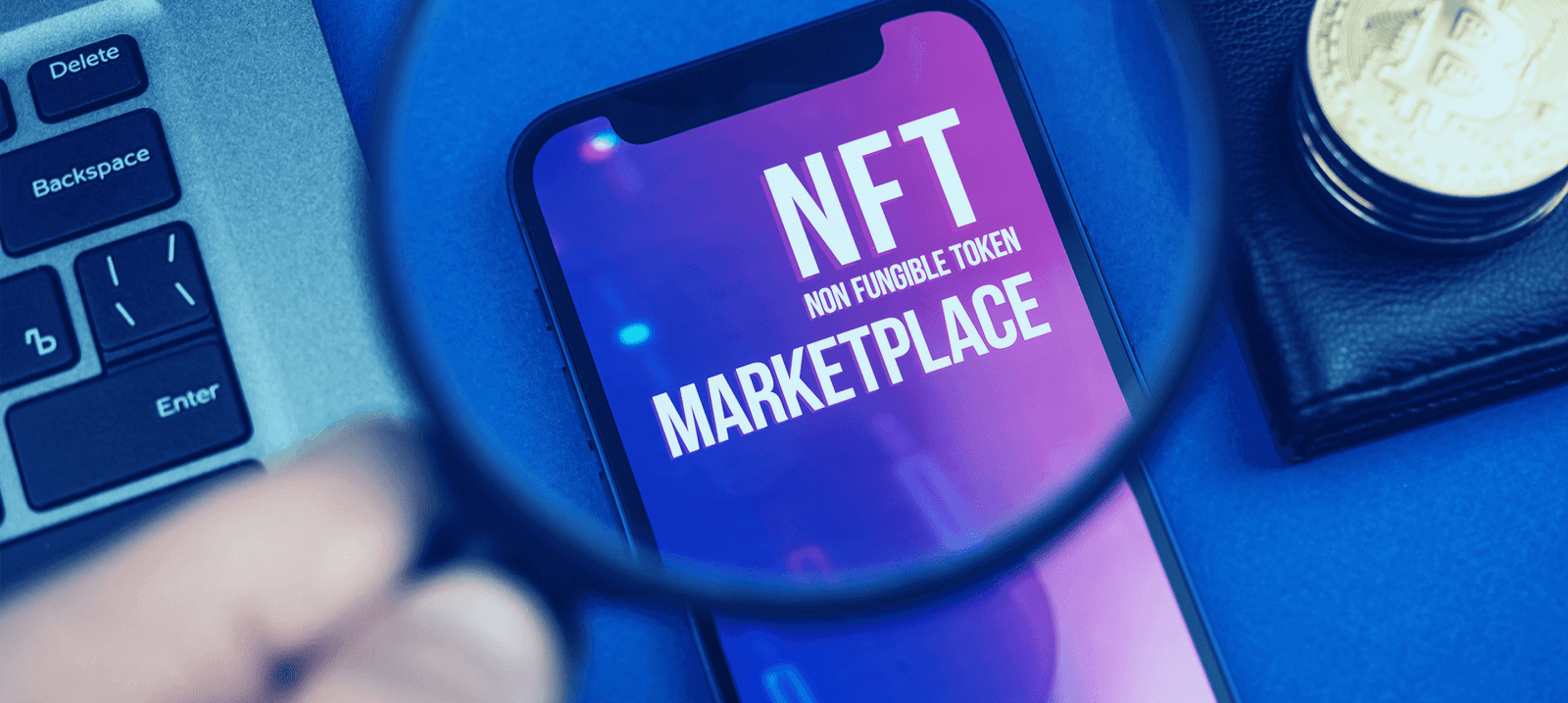
Using an NFT marketplace begins with setting up a crypto wallet like MetaMask (for Ethereum) or Phantom (for Solana) to store digital assets and interact with blockchain networks.
After funding the wallet with cryptocurrency, users connect it to their chosen platform, enabling secure transactions via smart contracts.
- Browsing and discovering NFTs involves leveraging search filters, trending collections, and project analytics to identify valuable digital art, virtual real estate, or gaming assets. Buyers assess creator credibility, collection rarity, and market trends before purchasing through fixed-price listings or auctions.
- Buying and selling requires understanding gas fees (network transaction costs) and platform-specific charges (2–10% per sale). Sellers mint NFTs by uploading digital files, embedding metadata, and paying minting fees, while buyers verify ownership history and authenticity before completing transactions.
- Managing an NFT portfolio involves tracking asset performance across platforms, securing assets in hardware wallets, and using tools like NFTfolio or CoinStats for real-time valuation updates. Advanced users optimize returns by diversifying across niche marketplaces (e.g., NBA Top Shot for sports collectibles) and monitoring market trends.
Throughout the process, security measures like two-factor authentication and secure seed phrase storage protect against scams, while compliance with tax regulations ensures legal adherence
Challenges and Considerations For NFT Marketplaces

NFT marketplaces face critical hurdles that impact users and platforms. Here’s a simplified breakdown:
1. Legal & Regulatory Uncertainty
- No clear laws yet: Most countries (like India) lack NFT-specific regulations, creating a “legal grey zone” .
- Tax headaches: Governments impose heavy taxes (e.g., India’s 30% crypto tax) that affect profits.
- Copyright fights: Unauthorized use of art/music in NFTs leads to lawsuits (e.g., Rihanna’s case).
- SEC crackdowns: Platforms like OpenSea face lawsuits for allegedly trading unregistered securities.
2. Environmental Impact
- High energy use: Minting/trading NFTs on blockchains like Ethereum consumes massive energy (e.g., 211kg CO₂ per NFT).
- Ethereum Merge: Shift to Proof-of-Stake (2022) cut energy use by ~99%, but older blockchains still harm the planet.
- Carbon offsets: Some platforms invest in tree-planting or renewable energy to balance emissions.
- Eco-friendly alternatives: Marketplaces now use blockchains like Solana/Polygon for lower carbon footprints.
3. Market Risks & Scams
- Phishing attacks: Fake links steal crypto wallets (e.g., $1.7M stolen from OpenSea users).
- Rug pulls: Developers abandon projects after fundraising (e.g., $18.7M Lympo hack).
- Fake NFTs: Scammers sell copied art or fake celebrity collections.
- Liquidity risks: NFTs may lose value fast if demand drops (e.g., 2023 sales dropped 18% YoY).
Conclusion
NFT marketplaces have changed how we own digital items. They offer new chances for makers, buyers, and investors. These sites link special digital goods with people around the world.
This helps move billions of dollars through trades. It also changes how we think about ownership and investments. The move from simple blockchain uses to complex systems shows how advanced NFT tech has become.
Many platforms meet different needs. For example, OpenSea serves a broad audience, while NBA Top Shot focuses on sports fans.
As safety features improve, trading NFTs becomes more attractive to everyday users. With better blockchain tech and rising interest in owning digital goods, NFT marketplaces will play an important role in the future of online shopping and making money from art.
Experts say the market for digital collectibles will rise from $10.95 billion in 2025 to about $54 billion by 2035.
This shows a great chance for investment in this new type of asset that combines new ideas with creativity and community growth.
FAQs
How big is the NFT marketplace?
The NFT market had a trading value of $17.6 billion in 2021. It is expected to grow to $36.23 billion in 2024. By 2034, it could reach $703.47 billion. This growth comes from digital art, game items, and virtual land. Platforms such as OpenSea and NBA Top Shot lead this space. The rise shows more people are interested in blockchain tech and unique digital things.
Is NFT a good investment?
NFTs can offer high rewards, but they also come with risks. These risks include changes in the market, scams, and unclear rules. Some collections, like Bored Ape Yacht Club, have made money. However, from 2023 to 2025, sales dropped by 18 to 63%. To succeed, it is important to study market trends. You should also check who the creators are. It helps to spread your investments across different types of NFTs. Examples include digital items and virtual land.
Can I convert NFT to real money?
You can sell NFTs on sites like OpenSea. You will get cryptocurrency for your sales. Then you can move the funds to exchanges, such as Coinbase. This allows you to change the crypto to cash. Be careful of fees during transactions and gas costs. These fees can be between 2% and 10%. They might lower your profits. Make sure to follow tax rules. Also, use safe crypto wallets to keep your money safe.
How does an NFT marketplace work?
Users link their crypto wallets to sites like Rarible. They can mint and trade NFTs there. This is done using smart contracts. Blockchain checks the ownership of these items. Marketplaces help with ownership changes and payments. They also handle royalties and keep things safe. They use features like two-factor authentication for better security. The main platforms work with different blockchains, such as Ethereum and Solana. They offer easy-to-use interfaces for browsing and placing bids.
How much does it cost to create an NFT marketplace?
Basic costs to build an NFT marketplace are between $80,000 and $120,000. Advanced platforms with special features cost between $150,000 and $250,000. These costs cover smart contract work, wallet setup, and safety steps. Using white-label solutions can cut costs. However, choices like blockchain type (Ethereum or Binance Smart Chain) and area focus (gaming or art) affect the price.
